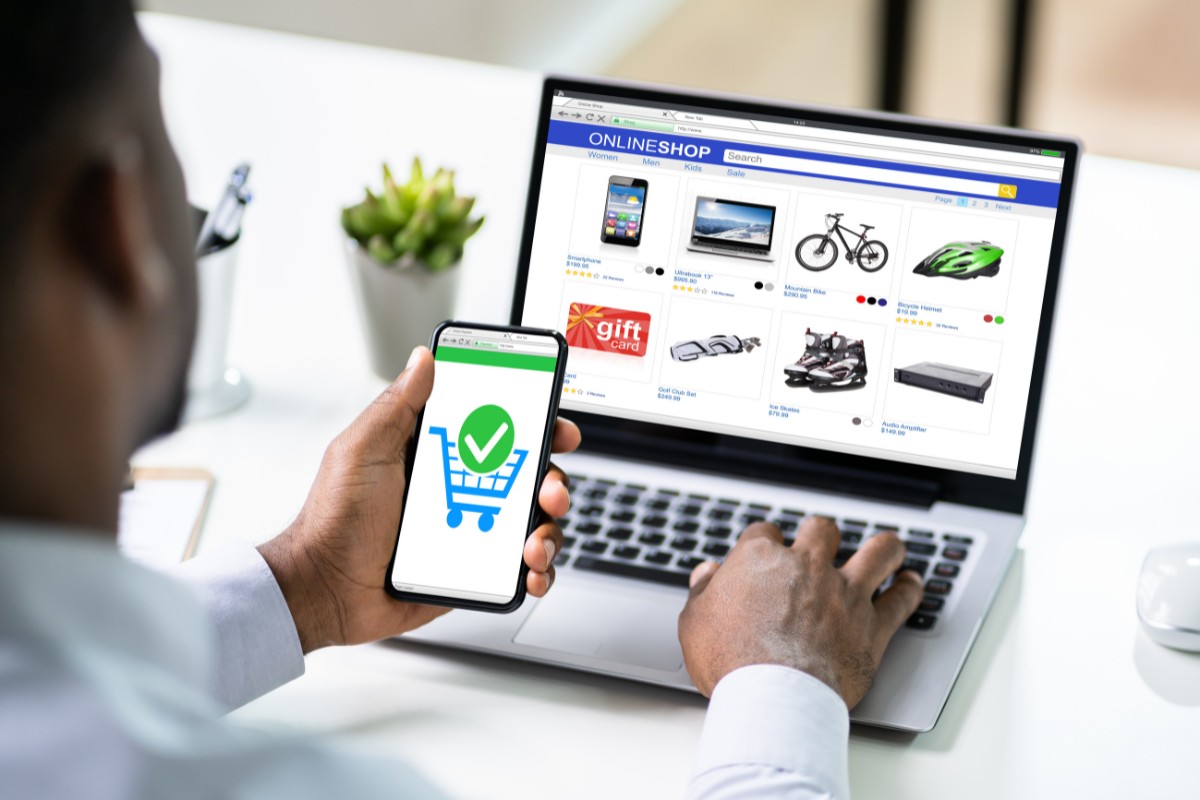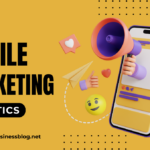As we dive deeper into the digital age, small business website statistics have changed drastically.
Not too long ago, small businesses thought they could get away without having a website.
Although this may have been true to some degree, it’s definitely not the case nowadays.
The most recent data shows that roughly 73% of all small businesses have a website.
Consumer habits play a large role in this as 99% of them use the internet to source local businesses for a variety of needs.
73% may be a majority, but that still leaves 27% of small businesses without a website, which is a dangerous game to play.
This article will delve into a variety of statistics surrounding small business websites, including data on the past, present, and future of this topic.
Post Contents
Key Statistics
- 73% of small businesses have a website
- The general cost for a small business website is anywhere between $1,000 and $10,000
- Before making a purchase, 81% of shoppers will research a business and their product or service online
- 94% of small business websites are built to be mobile friendly
- Only 17% of small businesses actively invest in search engine optimization (SEO)
- Businesses without a website could lose 70% to 80% of potential customers
Small Business Website Statistics: The Most Current Data
In our modern era, a majority of small businesses understand the importance of a website before they even get started.
However, not all of them are exactly up to speed.
Considering that most consumers spend time online searching for new products and services, it’s likely to be the first interaction they have with many organizations.
This makes it a vital component of any company, and without a website, a business is bound to miss out on a lot of potential customers.
Whereas some business owners simply don’t understand the need, and others may not be tech-savvy, it’s a learning curve that every business owner should work through.
Some statistics in this article may be rather general, while others focus on more niche aspects of small businesses and their websites.
1. How Many Small Businesses Have Websites?
As mentioned earlier, 73% of small businesses have a website of their own, but what does this mean for the other 27%?
It’s pretty clear, as 23.5% currently don’t have one, but that plan to in the near future.
The smallest demographic here is 3.5% of small businesses that have no plans of pursuing their own website.
To be honest, not having a website may work just fine for some small businesses.
However, for those who are looking to scale, a website is pretty much a requirement.
Companies that don’t have a website miss out on potential customers and could miss out on many different financial opportunities to grow their organization.
You’ll find various arguments from business owners on why they don’t want or need a website.
The unfortunate truth is that the facts about consumers and the digital age don’t lie.
Most small businesses that don’t have their own website are doomed to struggle more than those that do.
People like to browse and shop businesses online more than ever, so it’s only smart for businesses of all types to invest and maintain a website of their own.
(Zippia)
2. Customer Browsing Patterns Before Making a Purchase
In this day and age, a website is a significant part of the buyer’s journey for a majority of consumers.
Around 70% to 80% of people research a business online before they ever visit or buy any of their products or services.
Customers can review a lot of information about an organization by browsing through their website.
In many cases, a website could be all they need to click the buy button.
Still, many small businesses don’t care to develop or maintain a website for themselves.
On top of that, out of the small businesses that do have a website, only 17% of them invest in SEO.
This is a vital component regarding a website’s relevancy and web traffic, which many business owners have yet to grasp the importance of.
Unsurprisingly, 30% of small business owners find keeping up with advances in technology a significant challenge overall.
(Review42)
3. Internet Searches for “Small Business Website” are Increasing
Although there’s still a portion of entrepreneurs who aren’t so keen on managing their own website, searches on Google are showing trends in the opposite direction.
As generations pass and more young people start to build their own businesses, statistics on this topic are bound to change.
Over the last five years, Google searches for “small business website” have increased quite a bit.
Within the last year alone, searches with this phrase have increased by 25.68%.
You can assume that part of this is due to the many changes in business that stemmed from Covid-19.
Since the pandemic, web traffic for online shopping is at an all-time high.
When you consider the value a website provides to consumers and the many different ways it can help a business grow, having one is pretty much a no-brainer.
However, many entrepreneurs still need to have the concept explained to them in top-to-bottom detail before they even consider it.
Sure, managing a website can incur additional costs, but the profit and brand awareness it can deliver comes with a lot more weight.
(FitSmallBusiness)
4. How Much Does the Average Business Spend on a Website?
The cost of creating a stellar website for a business isn’t something that should be overlooked.
They aren’t always the cheapest, but the price can vary significantly based on what’s required to get the work done.
Data shows that 66% of businesses generally spend less than $10,000 to build a website that’ll last.
For some small businesses, that’s a pretty steep number.
There’s no argument in that, but you can also get an amazing website for as low as $1,000.
This type of work comes with quite a bit of range, depending on the workload.
Regardless, costs have to be considered when growing a small business, but having a website is one of those necessary expenses that can pay off in the long term.
You also have to consider what it costs to maintain a website, which includes more angles than you might expect.
The table below highlights this point in more detail.
Each of these categories comes with various costs that could make a website endeavor much more expensive.
Although this is true, building and maintaining a website is seen as a necessary evil for any growing business.
Regarding those who don’t invest in a website, it makes consumers and other professionals wonder exactly why that is.
Well, the answer to this comes down to a handful of answers for the most part.
(SmallBizTrends)
5. Why Don’t Some Small Businesses Have Websites?
If you were to interview a variety of small business owners, those who don’t want a website will likely give you many different reasons.
However, statistics provide a clear look at some of the most popular reasons for this, and some of the answers may not be so surprising.
In the list below, you can get a look at the primary reasons why small business owners don’t want to invest in a website.
- Not relevant to their industry = 27%
- Don’t want to take on the cost = 26%
- Would rather use social media instead = 21%
- A general lack of technical knowledge = 15%
One point I’d like to highlight is the lack of technical knowledge.
Overall, you can assume that the demographic of this crowd includes older individuals.
Most young people don’t shy away from incorporating technology into their business, as they grew up with it, and it has always been a huge part of their lives.
When it comes to past generations, modern tech, websites, and the internet came way later in life, and many of them simply don’t understand the need for it.
Aside from that, when they do look into it, the landscape of the internet and websites is an extremely confusing hurdle to cross.
Due to this, many small business owners in this category have simply written off websites entirely.
(Zippia)
The ROI of Having a Website

It’s important to look at ROI as more than just money, as brand awareness, customer loyalty, and many other positive aspects can be considered a return on a monetary investment.
ROI is an integral part of growing any business, and it’s important to understand the potential return of a company website.
As a business owner, it’s completely understandable to poke holes into anything that might cost money, but looking at the return is equally important.
ROI has many faces, and websites have proven on numerous occasions that it can offer much more than an increase in sales.
6. Over Half of Americans Use Mobile Phones to Shop Online
Not only is having a website important, but it should also be mobile-friendly.
This means that your website should function without fail on a desktop or mobile device.
Furthermore, it should be rather easy to navigate, regardless of what kind of device you’re using.
Current data shows that 54% of consumers in the U.S. shop online with their mobile phones.
The main point here is not about mobile phones but why having a website is so important.
You also have to consider how many of these people exclusively shop online and will never step foot inside a store if they don’t have to.
(Zippia)
7. e-Commerce Sales are Rising
Everyone can agree that the pandemic caused a rise in e-Commerce sales, but this isn’t the only factor that’s in play.
Online sales have been rising for years as more people lean to the convenience of online shopping no matter where they are.
Based on data taken from 2021, e-Commerce sales make up 19% of all retail sales around the globe.
You can assume this number is increasing as we speak, especially with new shopping integrations through applications, augmented reality, and other immersive technologies.
Websites are becoming more than just landing pages; they can deliver an impressionable experience that’ll forever attach customers to your brand.
In many circumstances, a website is the first time a potential customer will interact with a business.
Having a website isn’t just about sales; it’s about brand awareness on the world wide web, which is ever expanding, and increasingly competitive space.
To understand ROI from another standpoint, it’d help to take a look at what the search engine market share looks like.
(Zippia)
8. Understanding the Search Engine Market Share
Another beneficial reason for having a company website is to increase your presence across search engineers.
This also falls on the importance of SEO, but that’s an entirely different monster on its own.
Nevertheless, one could assume that Google dominates that search engineer market, and they’d be right.
Although there are many different search engines available, there are only a few that are dominating the market worldwide.
You can get a look at the top five search engines by market share in the table below.
| Search Engine | Market Share |
| 71.61% | |
| Bing | 21.11% |
| Yahoo! | 2.53% |
| Yandex | 2.27% |
| Baidu | 1.56% |
You can see the drastic leap in market share once you get past Google.
For the most part, when businesses create a website and then dive into SEO, it’s to hopefully rank higher in the search results on Google.
This is for obvious reasons, but considering you’re competing with a seemingly endless list of similar products and services, SEO and website maintenance can be a constant task.
It’s a competitive space, but even if you don’t appear on the first page of Google in search results, it doesn’t diminish the importance of having a business website.
We’re living in what many call a “chronically online” world nowadays, and small and large businesses will have to adapt to this to survive.
(NetMarketShare)
9. Focusing on the User Experience
Part of what makes a website resonate with people is the user experience (UX), and this comes with many intricacies on its own.
Data shows that the ROI of spending on improving the UX of a website is upwards of 9,900%.
That may sound made up, but it couldn’t be more true.
A stellar UX goes a long way with many internet users, especially pertaining to the younger crowd.
Statistics also tell us that 80% of consumers will leave a brand’s website after three bad experiences.
The important note here is that those three bad experiences can stem entirely from a poor UX.
There’s a level of appreciation towards a satisfying user experience, and it has proven to help drive consumers through the customer journey with less resistance.
It should also be mentioned that creating an excellent user experience takes a little website experience.
There are many little details that create the whole of the UX, and this is widely understood among techies like developers.
Nevertheless, investing in UX is vital when looking to connect with your consumers and keep them coming back for more.
(FitSmallBusiness)
10. The Importance of Visual Intensity
Aspects like photos, buttons, thumbnails, the header bar, and many other visual aspects play into the importance of visual intensity.
It’s known that optimizing visual intensity can lead to an increase in positive response up to 5,03%.
Every little bit counts when it comes to ROI, and a 5% increase can stack up to many positive customer interactions down the line.
This goes hand in hand with UX, as the visuals of your website are just as important as how your website feels through navigation.
A positive response to the visuals of your website offers a high chance of that customer returning at some point in time.
At the very least, they’re going to remember you for the UX alone.
Overall, UX and visual intensity go together and are primary aspects of how new users respond to your website.
Aside from creating and managing a website, small businesses also need to understand how global and local traffic work on the internet.
(FitSmallBusiness)
Diving Into Website Traffic for Small Businesses
Once you have a website up and running, one of the next things a small business should set up is a Google Analytics account.
This will help provide a visual reference on all of the traffic their website receives, which can help refine marketing efforts or direct any website changes that need to be made.
It sounds simple, but to a novice user, web traffic and analytics can be rather difficult to grasp at first.
Even if it can cause a few headaches, it’s another necessary evil that can aid small businesses in taking every aspect of their website in the right direction.
11. Location-Based Mobile Searches
There’s enough data to support the fact that 78% of location-based mobile searches end up leading to an offline purchase.
What’s more important is that 18% of these lead to a purchase within 24 hours.
This means that many consumers will research a business online and then visit them in person to make a purchase.
Moreover, 72% of customers searching for small businesses locally tend to visit a store within five miles of their current location.
This is a great example of why having a website is so helpful for small businesses on a local and global scale at the same time.
Another aspect of this is that people who find what they’re looking for online are very likely to share this information with people they know.
For example, 62% of consumers are known to share online deals with friends and family.
When you consider that 81% of buyers trust the advice of their loved ones over a company, this can be very beneficial.
This also highlights why reviews and recommendations are as important as they have always been.
(Zippia)
12. Frequency of Searches for Local Businesses
You might be surprised how often people search for a business, product, or service in their general area.
It’s on a rather consistent basis, which is important whether you have a brick-and-mortar, mobile, or digital product or service.
In the table below, you can get a visual of how frequent these searches are on a local scale.
| Frequency of Online Searches | Percentage |
| Multiple Times Per Week | 35% |
| Weekly | 22% |
| Daily | 21% |
| Monthly | 16% |
| More Than Once Per Month | 5% |
| Not At All | 1% |
Regardless of how you break down the frequency, people are pretty much searching for local businesses all the time.
It only makes sense to have a website, as people are looking for what small businesses have to offer more than they might think.
(Zippia)
13. Nearly Every Consumer is Using the Internet

When it comes to discovering small businesses in the surrounding area, 99% of consumers look to an online search as their first approach.
Discoverability is higher than it has ever been, and when you factor in that nearly 100% of consumers are searching for businesses online, it’s pretty clear why a website would be helpful.
Small businesses don’t need to have the best website in town to make an impression, but it is a core face of any brand.
People will judge a lot about a company based on what they discover on their website.
Including products, services, company details, and contact information are all vital and play a direct role in business growth.
Whether a small business owner is savvy with technology or not, those without a website are simply hindering the growth of their brand.
(Zippia)
The Bottom Line
No matter which way you look at it, the reality is that websites are a crucial component of any business, small or large.
Where many entrepreneurs mess up is they think a website isn’t important for their particular product or service when the purpose of a website is much more than that.
Statistics have all the proof business owners need to create a website and expand their brand presence to the rest of the world.
This article provided a variety of small business website statistics and relevant information that emphasize the importance of having a website in our modern era.






























